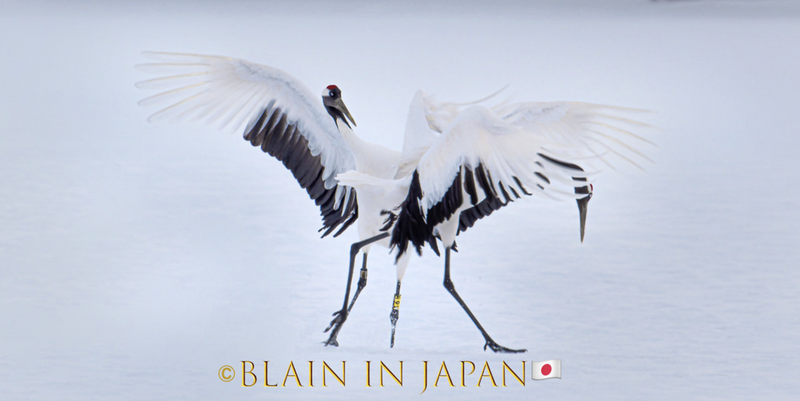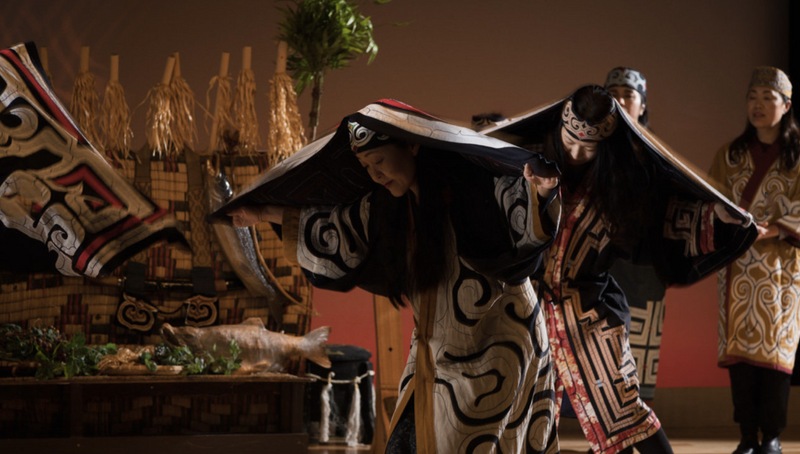May 24, 2022
Mating Ritual of The Red-Crowned Cranes - Hokkaido, Japan
Gallery - Mating Ritual of The Red-Crowned Cranes - Hokkaido, Japan

I can think of no other bird gentler or more romantic than the Red-Crowned Cranes, which are one of the main species that I share with visiting international colleagues and photographers on my annual visit to Hokkaido. These gentle giants, also known as the snow ballerinas, show so much grace while performing their courtship dance. Once they have created their union as partners, they bond with those mates throughout their entire lifetime thereafter. Because this bird is monogamous, they represent loyalty a long and fruitful life and bring good fortune.
The Red-Crowned Crane, tancho in Japanese, stands at 150 to 158 cm (4ft to 5 ft) tall weighing 8 to 11 kg (17 to 25) pounds with an amazingly large wingspan measuring 200 to 260 cm (6.5 ft to 8.5 ft) and live more than 60 years. The Red-Crowned Cranes ritual courtship dance is a masterpiece of impassioned choreography; they bow to one another, then raise their heads towards the sky and call in unison, and as they call, they begin to dance. One pair or the entire flock will leap into the air, at the same time commencing the mating ritual ballet/dance.

The First Nations peoples of Japan, The Ainu, are brilliant storytellers, and they tell the story of a variety of animals and spiritual or divine beings who are composed of or possess spiritual energy. At Ainu powwows in Hokkaido, similar to North Americans First Nations peoples, the Ainu, tell the story of one such entity, the Red-Crowned Crane, with human dancers, in which the live birds are considered to be the Kamuy (a diving being) Gods of the Marshes, and spirit dancers. At Hokkaido powwows, the mystical healing energies of the Kamuy (Gods) of the Cranes are nearly tangible as the dancers perform the sacred Ainu dances and pay tribute to other mystical beings.
I have a cottage in Hokkaido, and I am often photographing and filming at one of the many riversides where the cranes roost in the marshlands in the Kussharo, Nemuro, Nakashibetsu and several other regions of Hokkaido.
In years past, one of my favorite shooting locations, the Otowa Bridge, Tsurui village, was beyond crowded with dozens of photographers on the bridge during the peak Red-crowned crane photography window, but this has been the norm in recent years. Many are just garden variety tourists without a decent camera, but due to Covid-19 there have been more local photographers and fewer tourists, one of the only positive results of the pandemic. It has been effective in preserving wildlife and helping maintain the bond with birding photographer lovers on beautiful and mostly calm Hokkaido. And I hope it will become the new norm that we birders enjoyed twenty years ago, but once the world returns to normal, I fear the bridge will be overcrowded again, but until then, us locals will be enjoying our solitude with The Gods of the Marshlands-Spirit Dancers; with our friends and clients.
I never thought I would call Japan my home, but after 20 years I understand the beauty and appeal of Land of the Rising Sun. Part of my affection for Japan stems from my bride, Manami who introduced me to the essence of this magical land. As an amateur historian and sociologist, the uniqueness of Japan’s past captured my heart and soul, bonding me to the society and culture that is now a part of me. This society has embraced me, and I am no longer a visitor, I have recast myself as a cultural hybrid, always updating my identity with the rich cultural information from the past into the present, and, invariably, the future.



0 Comments